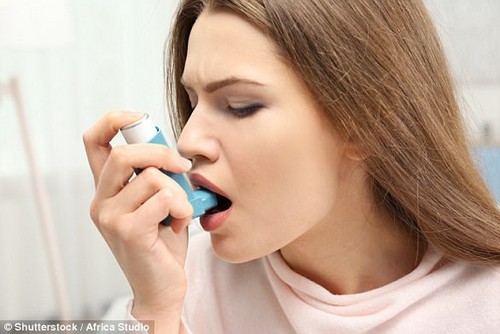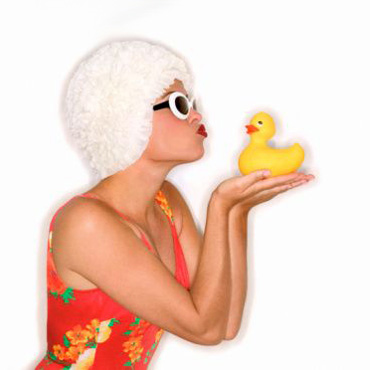Methods to ‘treat’ or remove scars have become more and more advanced over the past few decades, given the advances in – and increased obsession with – plastic surgery.
Far beyond just being marks, scars are a demonstration of the body’s incredible coping mechanisms to repair itself.
Be it from a cigarette burn, a major accident, surgery, or an attack, the skin rushes to patch up wounds to protect the sensitive inner layers of our bodies.
Indeed, a study this week revealed scientists will soon be able to print malleable skin on a 3D printer to heal wounds quicker and smooth them over to fit the patient’s desired aesthetic.
But in a moving new photo series, photographer Sophie Mayanne questions our desperation to nip, tuck, tint, cover, and smooth out the ‘imperfections’ that project a permanent, visceral, visible reminder of of physical and emotional pain.
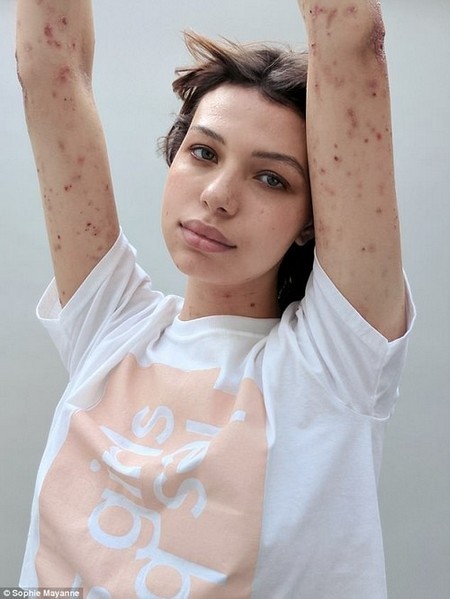
UK-based photographer Sophie Mayanne sought to photograph 10 people with various kinds of scars. She has now done 300 portraits, and aims to reach 1,000. Pictured: Maya, one of her subjects, who has epidermolysis bullosa, a rare skin condition that causes blistering
HOW DO WE SCAR?
There are three layers to the skin: the epidermis (top), dermis (middle) and hypodermis (bottom). Scratches that merely touch the epidermis will rarely leave a scar, or at least not a permanent one.
Lingering scars form when there is damage to the dermis, which is the part that produces collagen. First, the body sends blood rushing to that area to clot the blood from seeping out.
Once the wound has semi-healed, the scarring process begins. In reaction to the wound, the dermis produces more collagen fibers to patch up the gap that is exposing the sensitive interior.
Particularly fierce wounds may trigger the body to produce more collagen than in other cases, making the scar protrude more. This is particularly common in dark-skinned people and children.
Surgical scars and acne scars can often appear sunken.
The project began when Mayanne met a test shoot model who had visible scars, and spoke candidly about where he got them.
‘I thought his scars were fascinating – in a beautiful way, and his story was both shocking, compelling and inspiring,’ Mayanne told Daily Mail Online.
She mulled over the idea, looking into it here and there between other projects.
Increasingly, she started to see that scarring – though so common and so fraught with feeling – had not been extensively explored in any body of artwork.
‘There was some photographic imagery that existed, but I felt like it was designed more to shock – as opposed to connecting with the story behind the scar,’ she explained.
After six months, she decided to embark on a project to photograph 10 people with scars from various different causes, finding them through Instagram, Twitter, Facebook, and asking friends.
The reaction to the final series was staggering.
‘When the first set of images were released, I received a lot of comments from people expressing that they hadn’t seen images like this before, and whether I could photograph them too,’ Mayanne said.
‘I think my interest had piqued too, and I knew I couldn’t leave the idea where it was, as it still felt very much unfinished.
‘I felt like I had opened a doorway a little, but I had to go in and explore, and take more portraits!’
Now, her initial 10 has expanded to 300, and she is looking to reach 1,000.
‘From the beginning I wanted the project to be as inclusive as possible,’ Mayanne explained.
‘So I have featured a broad range of scars – some accidental, some self-inflicted, some surgical and some as the result of illness.’
There is a personal connection: Mayanne herself features in a new BBC Three documentary called The Naked Truth: Obesity, describing her relationship with over-eating and gaining weight to reach 21 stone (294 pounds).
Posing naked in a photo series for the show, Mayanne speaks about the misconceptions of the roots of overeating and weight gain; hers, she attributes to shyness and social difficulties, that led her to turn to food.
Scars, she says, are similar: they are different, and they are often rooted in an invisible trauma that person has suffered, or still suffers.
‘I think there is a lot of stigma that exists against many types of bodies,’ Mayanne says.
‘With scarring in particular, there is still a lot of work to do to disassociate the idea of scarring being ‘ugly’ and not ‘normal’.
‘For example, when you see someone with a scar and you are inquisitive – how do you ask them about it? Do you ask them what is wrong with them? That is the part that has got to change. There is nothing wrong with scarring, disfigurements, skin conditions and different bodies.’
The powerful reaction to Mayanne’s series, she feels, shed light on a need for this conversation, and a community to discuss how we deal with so-called bodily ‘imperfections’.
The past decade has seen a soaring amount of attention paid to mental health triggered by – and as a trigger of – physical pain.
However, in tandem, there has been a rise in veneering, be it with filters or surgical tweaks.
‘I think the fact it is raw, real and honest draws people in and makes it relatable,’ Mayanne said.
‘The series is kind of like my child, I guess! It’s been incredible to see how it’s grown, and also how my work has evolved through the process. I’m really excited to see it continue to grow, and flourish into a bigger series!’
ADELE
‘In 2014, I was diagnosed with Ewings Sarcoma, a bone cancer.
‘I had chemo for nearly a year and several surgeries for bone transplantations in my arm.
‘They took pieces of bone from my leg and thigh.
‘One time, my transplant broke, so I had a major surgery which took eight hours.
‘In two years I had 11 surgeries.’
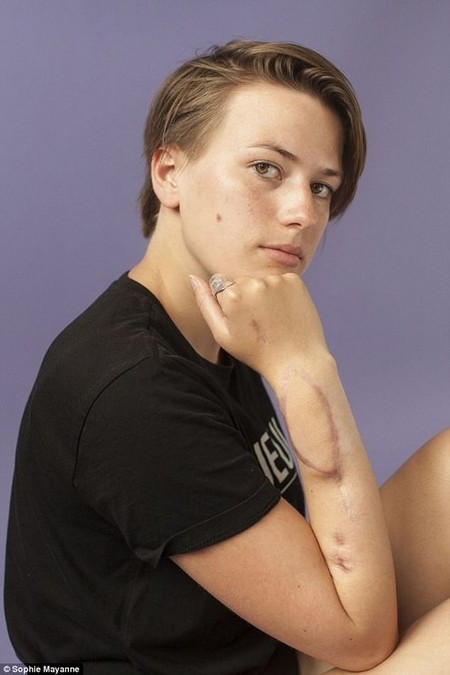
ADELE had 11 surgeries in two years after being diagnosed with bone cancer in 2014
ANNA
‘In August 2016 a lorry ran over my arm: the wheel stopped on my elbow before reversing off again, taking my bone and skin with it.
‘Over the year I’ve had five surgeries, most recently a bone graft and a muscle-flap skin graft from my back.
‘Clarissa Pinkola Estés says, “The doors to the world of the wild Self are few but precious. If you have a deep scar, that is a door”. I love this! In my scars I find pride, sensitivity and beauty.
‘My arm was remade of myself. But there is also anger and deep pain: scar tissue is tough, dry, and inflexible. It limits further the movement of my arm.
‘I don’t think my pain and my pride can ever be separated.
‘They will always be connected. But I feel in touch with both states and this makes me feel multiple, it feels exciting.’
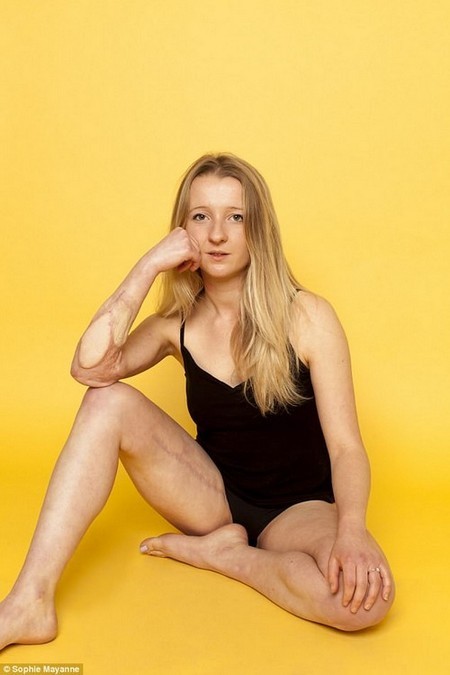
ANNA was run over by a lorry in 2016, requiring five surgeries and bone and skin grafts
BARBARA
‘In 2014 I was diagnosed with angiosarcoma of the breast, a rare and aggressive cancer.
‘Three surgeries and two chemotherapy treatments later these are the scars I bear.
‘My recent operation was an innovative surgery which involved removal of my sternum and four ribs, which were replaced by surgical cement, muscle from my back and a skin graft. It took me a long time to finally embrace my scars.
‘They document my journey and the courage and strength I did not think I had. Recently I was told the cancer had returned. Surprisingly I feel at peace.’
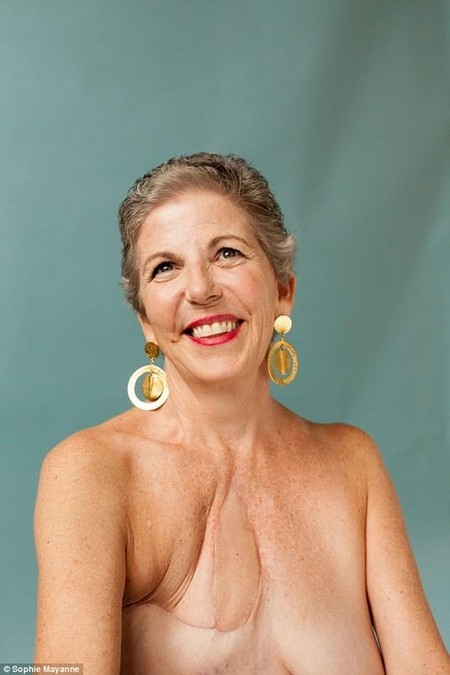
BARBARA had three surgeries on her chest after being diagnosed with a rare breast cancer
BILLY
‘At 18 I was diagnosed with Ewings Sarcoma, a rare bone cancer that predominately affects young people.
‘Before my diagnosis I had never heard of Ewings and had no idea how much it would impact my life.
‘Part of the treatment process involved having my femur replaced with titanium which resulted in a scar the length of my thigh.
‘I often felt as if the scar would remain a constant trigger of the times I spent sick to my stomach in hospital, but I’m gradually learning to view them as symbols of health, recovery and a chance at a long life.
‘I can now zoom out and see more than a sick body, but a person even more motivated in life than before.’

BILLY, like Adele, had bone cancer, and needed to replace his thigh bone with titanium
BINTU
‘When I was young, I pulled a cup of hot boiling tea off the counter. As a result, it burnt my left shoulder down to my left breast and stomach.
‘My scar has been with me since I was 11 months old – it is all I know, I don’t even remember my body without a scar.
‘I have my confident days where I say “it’s just a scar”. I’m sure everyone has a scar.
‘I’ve definitely had my bad days, but only when I meet a new face and they stare at it in disgust. It makes me think OMG is there something on my body? And then I remember “the burn” lol.
‘I wear this scar because it is a part of me. It’s just a scar.’
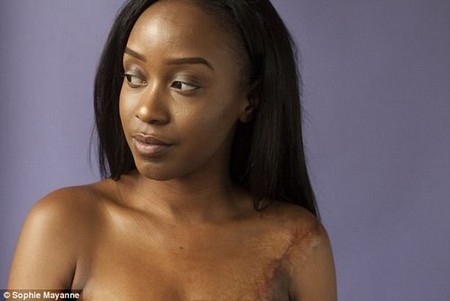
BINTU was burned across her left shoulder with hot tea that she pulled off a counter as a child
CATRIN
‘After I was severely burned in a coach crash in 2013, my life turned upside down. I fought for my life, for my physical abilities and my future.
‘Now, I’m 23 and have learnt to love the skin I’m in, embracing being a 96 percent burn survivor, and seeing every scar as a step in a long journey.’
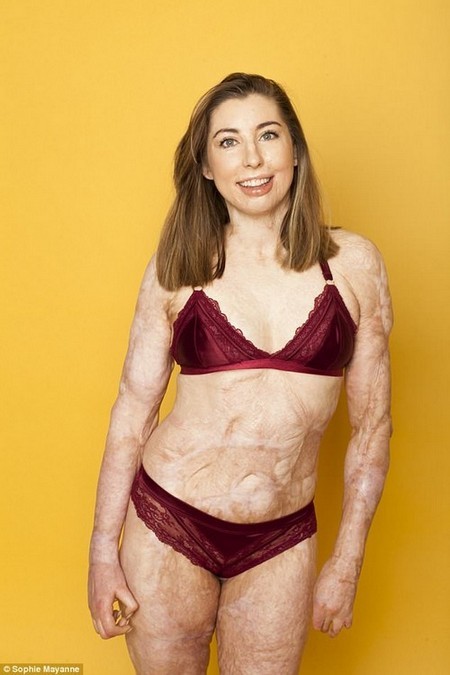
CATRIN suffered burns on 96 percent of her skin in a coach crash that burst aflame in 2013
CHLOE
‘I started self harming when I was 13 and have struggled with it ever since.
‘The issue with self harming is it gets progressively worse and you end up doing more and more damage to yourself than you think is possible when you first start.
‘It truly is an addiction and you get to a point where surgeons tell you that plastic surgery can’t fix the appearance of the scars, so the only thing you can do is love your scars so much that all the negative connections that come along with self harm slowly disappear – along with all the pain attached to the scars.’
‘My scars tell my story, and I’m never going to let anyone else’s thoughts or opinions change that.’

CHLOE started self-harming in her early teens, and it soon became an addiction
DEBORAH
‘My body is full of scars that represent my cancer journey. Each one is a war wound that has meant I have faced cancer and kicked it head on!
‘At first I hated my scars, but as time has gone on I’ve learnt to love them. I suggest we carry our scars with pride, knowing they have built us rather than defied us.
‘Seven months ago my life was turned upside down when I was diagnosed with stage 4 bowel cancer.
‘People say I’m brave to be going through what I am, but I’m not – I just have no other choice. I’m still me, I can still be sexy, I can still have fun – cancer doesn’t need to define me.’

DEBORAH was diagnosed with stage 4 bowel cancer. She says cancer does not define her
ELIJAH
‘In one way or another, my scars are all self-inflicted. The scars from self harm cover the tops of my legs, and hints are on my arm.
‘I am a trans man and started medically transitioning two and a half years ago. In May 2016, I had top surgery (double mastectomy) to remove my breasts.
‘These scars are my new chest, the chest I have always wanted. They are my gender, my identity. I can’t remember having any other chest now.
‘I have been liberated. These scars represent so much of what I have experienced.’
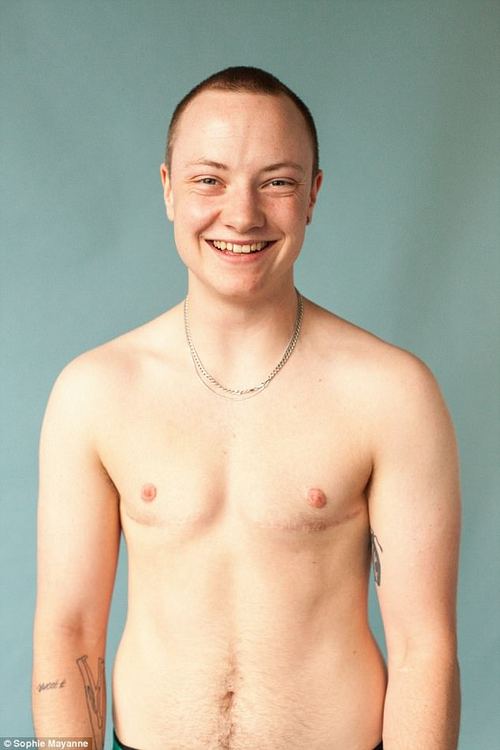
ELIJAH is a trans man, who started transitioning in May 2016 with top surgery
HANNAH
‘I was told I had breast cancer in April 2016.
‘After various tests and biopsies (from which I have a few tiny scars), I had surgery a week before my 27th birthday.
‘I don’t remember much about those first few days, expect I watched a lot of The Sopranos and I was in a lot of pain.
‘The first time I saw my wound I was inconsolable. I had a lot of issues over the next few months – my nurses said I’d broken the record for longest time taken to heal after a lumpectomy.
‘My body rejected the dissolvable stitches, and I had a couple of infections.
‘One day I was out with friends, and my wound opened up on one side, by the time I got to A+E blood was pouring out and my shirt was drenched. So the scar is much thicker than the original incision.
‘It’s difficult to talk about still, and I’m definitely not totally liking my scar yet, but I’m getting there. It’s not easy having a scar on a part of your body that’s “Sexy” – I don’t have that relationship with my breasts anymore.
‘This journey with cancer has taught me a lot, and I appreciate my body for doing it’s best and keeping me alive. I know that soon I’ll appreciate this scar too, as a reminder of how I had the strength to get through.
‘The scar under my armpit is from the same surgery, where they removed a few lymph nodes to check if the cancer had spread – it hadn’t.
‘I’ve had a lot of issues with movement in my arm and tightness in my armpit from it – who knew being able to put your arm above your head would be such a lovely, joyous achievement.’
HANNAH received a breast cancer diagnosis at the age of 26, and had surgery before 27
ISABELLA
‘In the summer of 2015 I was in a house fire. My clothes and way of life up in flames. I spent my summer in a burns unit on Fulham Road.
‘My scars and scar tissue continue to change, but I have never felt more beautiful.’
ISABELLA suffered burns all over her body in 2015 from a house fire in London
ISABELLA: She spent a summer in a burns unit, and now says she feels beautiful
LEO
‘When I was in my 20s, I was taking a short cut through the local park when I realised the gate had been locked.
‘I decided to climb up over the railings and my footing slipped, catching my face in two places. The spikes passed through my face. Luckily the park attendant noticed what happened and called an ambulance.
‘I feel like my looks were ruined by the accident, but I carried on as normal. People often think I’ve been in a knife attack or fight, so believe I’m a bad person.’
LEO tried to climb over a gate after getting locked in a park, and caught his face on the spikes
MAYA
‘The last few months have been extremely challenging as the condition of my skin as deteriorated massively.
‘From 18 months old when I was diagnosed with epidermolysis bullosa to earlier this year, I was able to live an almost normal life despite my skin, it was easy to hide and easy to manage.
‘But earlier this year it started getting rapidly worse and I am now able to do less of the things I once could.
‘My confidence and self-esteem are almost nonexistent most of the time. So much of my day is spent managing my skin or being in pain from it. But now, more than ever, I need to remind myself that I am still the same old me. I am still beautiful and this condition that I will be lumbered with for the rest of my life, does not define me as a person. It will always be a huge part of my life but I will never let me take over my life.
‘EB is so rare that there is so little awareness for it and in a lot of cases it is life-threatening, so I’m posting this not only for me but for everyone suffering.
‘Because of the lack of awareness, the funding towards trials and research is so limited that I probably will never access to a cure, as much as that upsets me, I just hope that future children will get access to more treatment and a possible cure. If anyone cares enough to find out more about EB, Google search Debra eb.’
MAYA has epidermolysis bullosa, a rare skin condition that causes blistering and tenderness
MERCY
‘My scars are from a fire related to domestic abuse. I got burnt at the age of 29, and it’s been a difficult journey coming to terms with it.
‘The comfort I take from my scars is they make me who I am today. I call them my most precious, and expensive piece of jewellery I own.
‘I have survived and if having my picture taken, and exposing my scars can help anyone else then that’s good for me!’
MERCY is a domestic abuse survivor who was forcibly burned in a fire by an ex
NELL
‘My scars were made whilst I was in a coma for 90 days.
‘The scars on my face, neck and groin are there because I was on life support known as ECMO – my lungs had been devastated by a necrotising pneumonia and they had to stop me breathing – the ECMO oxygenated my blood and kept me alive for 66 days.
‘The other round scars on my body are from chest drains because both my lungs had collapsed and infection and air was trapped in my chest cavity.
‘The scar on my back is from surgery I had because my chest had filled with so much blood that it was impacting my heart.
‘All this began when I went on a school trip to the Ardeche in France. I left on the 26th June with the school and came home on the 24th October.
‘I was in a French hospital in Montpellier, in intensive care all that time. They never gave up on me and fought with me.
‘My scars are the map of my survival and I’m very proud of them.
‘They give me strength and individuality. It’s very rare for people to survive this infection – and in actual fact I survived two, because after the first pneumonia, I suffered a second infection – hospital born MRSA and went into multiple organ failure.
‘We all fought on. I have a small scar on my throat where I had a tracheostomy – it was strange to have no voice when I woke up, but I wasn’t afraid – I only believed.’
NELL contracted a fierce kind of pneumonia twice, and MRSA, that left her in a coma for 90 days in Montpelier, France. She had multiple surgeries and was put on a life support machine
SAMANTA
‘I played with a hand gun at age 14 and it gave me a lifetime in a wheelchair.
‘But despite what you might think, I’ve never found a reason to be victimised by my condition.
‘My spiritual and physical scars made me grow stronger, empowered. I wanted to be a tennis player, so I became a tennis player. I wanted to be a model, and guess what… I am a model.
‘As a model of diversity, I work in the fashion industry representing people that have limitations but are not limited. They love, they fight, they win, they lose.
‘They are real and my story helps them to see how beautiful and meaningful they are. All scars included.’
SAMANTA was confined to a wheelchair after shooting herself playing with a handgun at 14

